Radishes are fast growing vegetables that have many different stages of growth from planting the seed to harvesting.
In this article I’ve listed the growth stages of radish plants along with some handy tips to help you to grow an abundant crop of radishes in your garden.
This post contains affiliate links. Please read the disclosure for more info.
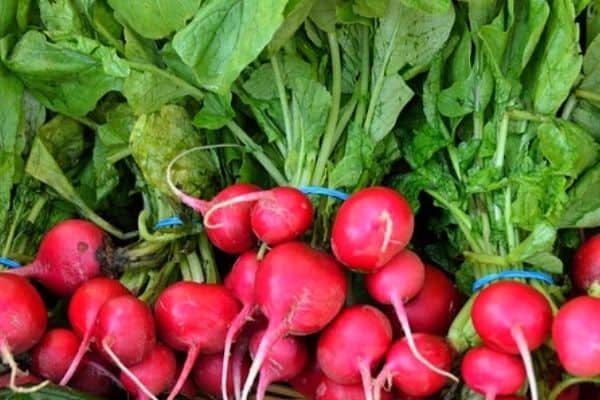
RADISH PLANT GROWTH STAGES
Stage 1 – Planting the seeds
The first step in growing radishes is to prepare the soil by digging some aged compost into the soil.
Radish seeds can be planted directly in the garden in spring, about two weeks after the last frost of the season.
This will give them time to grow and mature before the hot weather of the summer months.
Plant the seeds about 1/2 an inch deep and space them out 2 inches apart or plant them closer together and thin them out later, leaving just the strongest seedlings.
Radishes grow fast so you can plant the seeds in between other slower growing vegetable plants like cucumbers, peppers or squash and the radishes will be ready to harvest by the time the other plants are in need of space.
Some common varieties of radish to plant in your garden include Champion, Cherry Belle, Watermelon radish, Icicle and French Breakfast.
Stage 2 – Germination
Radish seeds usually take about 3 to 4 days to germinate but it may take up to 10 days if the soil is still cool.
The first leaves to appear in the seedling are called cotyledons or seed leaves, which are then followed by the true leaves, which are green in color.
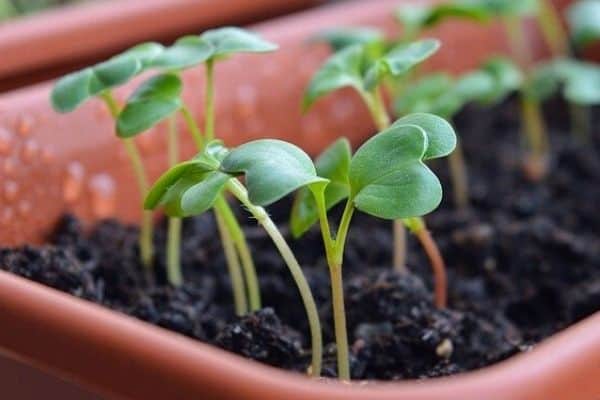
Stage 3 – Seedling
Once the seedling emerges you can add a low nitrogen fertilizer to the soil to promote root growth.
You’ll only need to add fertilizer once, since radishes are so fast growing.
Stage 4 – Growth of the root
As the plant matures, the root grows larger underneath the soil and the leaves will reach 6 to 18 inches (15 to 45 cm) tall, depending on the variety.
If you harvest your radishes early they’ll be milder in flavor than if you wait until they’re fully grown.
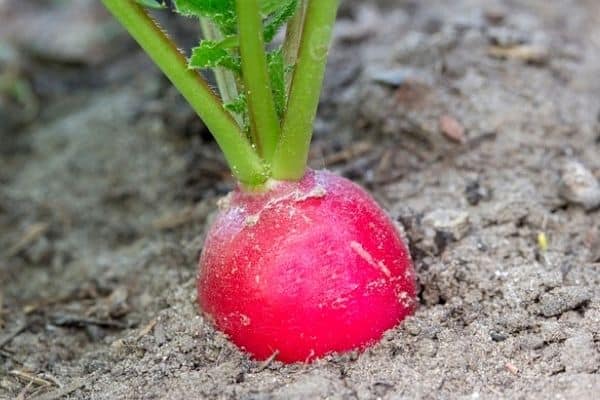
Stage 5 – Harvesting
Radish plants are ready to harvest about four weeks after planting.
You can check the size of the radishes by gently brushing away some of the soil around the base of the plant or pull one up to see how big it is.
Spring radishes should be harvested when they’re one inch in diameter for the best flavor.
If the radishes are left in the ground for too long they can become woody or bolt to flower.
Pull each radish out of the ground by holding onto the base of the leaves.
Remove the leaves, wash thoroughly and store in the crisper section of your refrigerator for up to a week.
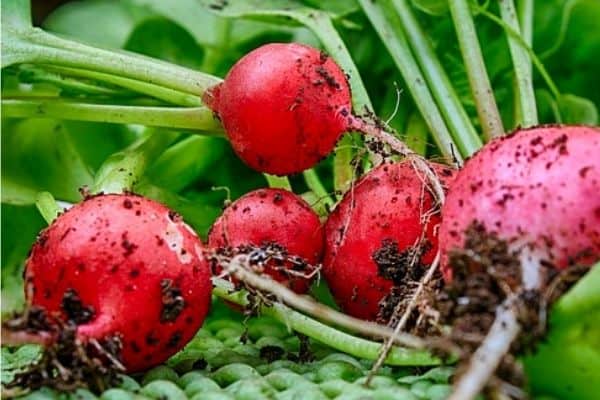
Stage 6 – Bolting / Flowering
Bolting occurs when radishes are grown when the weather is too hot or if they’re left in the ground for too long.
When radishes bolt they send up a large stalk that produces white or pink flowers, which are then pollinated by bees and other pollinating insects.
After the flowers are pollinated they will produce seeds.
The roots become inedible once the plants have bolted.

RELATED ARTICLES
- 12 Red Vegetable Plants For Your Garden
- 10 Fast Growing Salad Vegetables
- How To Harvest Eggplants
- 15 Frost Tolerant Vegetable Plants
- Lettuce Growth Stages
So there’s a quick overview of the different stages of radish plant growth that you can expect to see when growing radishes.
Watching the radish growth cycle is interesting and it doesn’t take long to grow your own radishes at home.
Have you tried growing radishes in your vegetable garden? Let me know in the comments below.
Are you on Pinterest? I have boards dedicated to Vegetable Gardens and Garden Ideas that you may find helpful. You can also find me on Facebook.

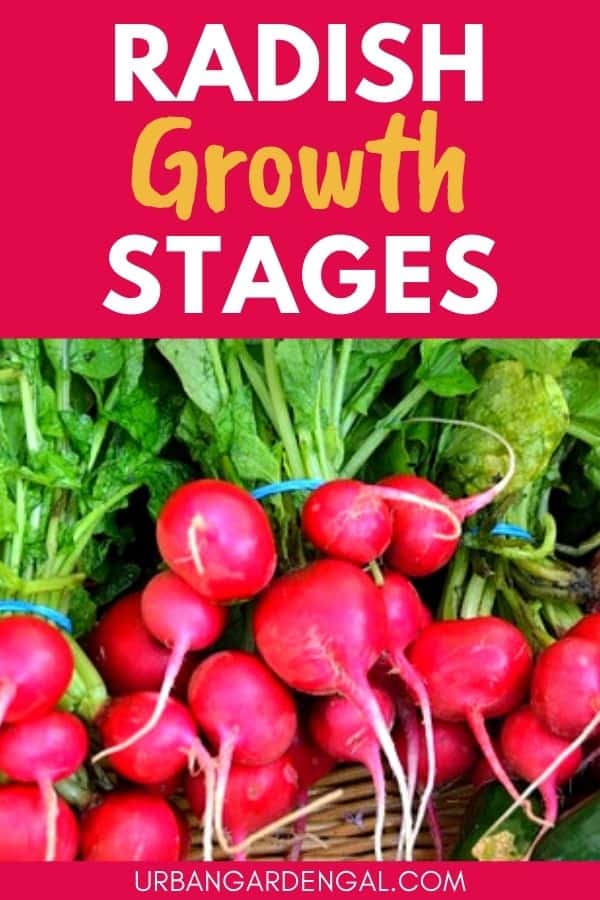
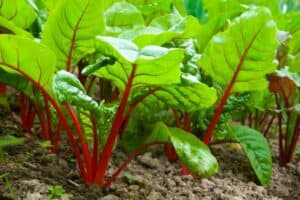
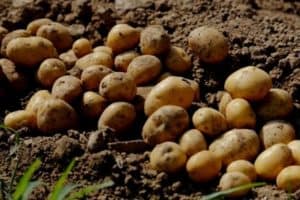
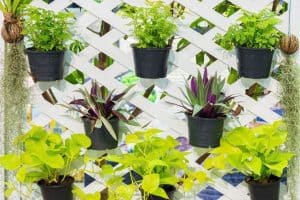

Hi, this article was very helpful to me and my friend because we are doing a science fair project on radish growth! Our radishes are currently ready to harvest. If we hadn’t seen this article, we would have left them in longer! Good thing we didn’t or else they would’ve grown flowers. Thank you so much.